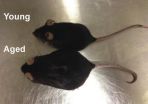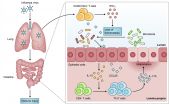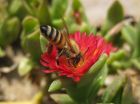Obesity a liability in cancer immunotherapy
2014-11-03
(Press-News.org) Packing on the pounds may lead to dangerous inflammation in response to anti-cancer treatment, according to a study by William Murphy and colleages at UC Davis. The study, published in The Journal of Experimental Medicine, shows that overweight mice develop lethal inflammation in response to certain anti-cancer therapies, suggesting a possible link between body weight and adverse side effects in cancer patients treated with similar protocols.
Cancer treatment has been revolutionized by new approaches aimed at stimulating the body's own immune system to fight off tumor cells. These "immunotherapy" approaches have proven successful in many types of cancer, but they are also associated with dangerous inflammation in some patients. This group had previously shown that treating mice with a combination of immune-activating stimuli—anti-CD40 antibodies and interleukin (IL)-2—stimulates tumor-fighting immune cells to eradicate cancer in young mice. In old mice, however, the same treatment triggered deadly inflammation.
As with humans, mice often accumulate fat as they age. Murphy's group now finds that lethal inflammation in response to anti-CD40/IL-2 immunotherapy is determined more by fat than age. Like old mice, young, obese mice succumbed to lethal inflammation in response to treatment. And putting older mice on diets protected them. This suggests that the results of preclinical immunotherapy studies in mice and humans—primarily performed on young subjects—should be interpreted with caution, particularly as cancer is a disease that predominately affects the elderly.
INFORMATION:
Mirsoian, A., et al. 2014. J. Exp. Med. doi:10.1084/jem.20140116
About The Journal of Experimental Medicine
The Journal of Experimental Medicine (JEM) is published by The Rockefeller University Press. All editorial decisions on manuscripts submitted are made by active scientists in conjunction with our in-house scientific editors. JEM content is posted to PubMed Central, where it is available to the public for free six months after publication. Authors retain copyright of their published works and third parties may reuse the content for non-commercial purposes under a creative commons license. For more information, please visit http://www.jem.org .
Research reported in the press release was supported by the National Institutes of Health and the National Institute on Aging.
[Attachments] See images for this press release:


ELSE PRESS RELEASES FROM THIS DATE:
2014-11-03
Flu infection has long-ranging effects beyond the lung that can wreak havoc in the gut and cause a dreaded symptom, diarrhea, according to a study published in The Journal of Experimental Medicine.
Gastrointestinal symptoms are often seen with flu infection, but because the virus only grows in lung cells, it's unclear how intestinal symptoms develop. Researchers in China now show that flu infection in mice prompts responding immune cells in the lung to alter their homing receptors, causing them to migrate to the gut. Once there, they produce the antiviral mediator IFN-γ, ...
2014-11-03
(SACRAMENTO, Calif.) — Immunotherapy that can be effective against tumors in young, thin mice can be lethal to obese ones, a new study by UC Davis researchers has found. The findings, published online today in The Journal of Experimental Medicine, suggest a possible link between body fat and the risk of toxicity from some types of immunotherapy.
The study comes at a time of great excitement about immunotherapy drugs, which are being developed and used increasingly against cancer, particularly in melanoma and kidney and prostate cancers.
Immunotherapies use immune ...
2014-11-03
When western retailers like Walmart and Tesco move into China, Chinese manufacturing gets a boost, shows a new study by the University of British Columbia's Sauder School of Business.
"Many assume Western retailers act as gateways for western goods into Chinese markets, helping to resolve trade imbalances tipped in favour of China's powerhouse manufacturing sector," says lead author Keith Head, HSBC Professor in Asian Commerce at Sauder. "But it appears that multinational retailers are actually enhancing the export capabilities of Chinese suppliers."
After 1995, when ...
2014-11-03
Almost everyone knows that improving your eating habits will most likely improve your health. What most people may not know, however, is that the effects of poor eating habits persist long after dietary habits are improved. In a new report appearing in the November 2014 issue of the Journal of Leukocyte Biology, scientists use mice to show that even after successful treatment of atherosclerosis (including lowering of blood cholesterol and a change in dietary habits) the effects of an unhealthy lifestyle still affect the way the immune system functions. This change in function ...
2014-11-03
Feeding honey bees a natural diet of pollen makes them significantly more resistant to pesticides than feeding them an artificial diet, according to a team of researchers, who also found that pesticide exposure causes changes in expression of genes that are sensitive to diet and nutrition.
"Honey bees are exposed to hundreds of pesticides, while they are foraging on flowers and also when beekeepers apply chemicals to control bee pests," said Christina Grozinger, professor of entomology and director of the Center for Pollinator Research, Penn State. "Our study demonstrates ...
2014-11-03
More than half of ships involved in the 100 largest oil spills of the past three decades were registered in states that consistently fail to comply with international safety and environmental standards, UBC researchers have determined.
The research also found one-third of the current global oil tanker fleet are flying the flags of states with poor marine safety records—what they term "flags of non-compliance."
"Vessels flying flags of non-compliance create more problems than the rest of the global fleet," observes Rashid Sumaila, co-author of the study and director ...
2014-11-03
For decades, maple syrup producers have eyed the weather to help understand spring sugar yields. But new research in the journal Forest Ecology and Management reveals a more valuable metric for understanding – and even predicting – syrup production: how many seed helicopters rained down from the trees the year before?
"Weather affects how much sap will flow out of the tree, but sap volume is only one piece of the puzzle," says Josh Rapp, who as a postdoctoral fellow with Elizabeth Crone, associate professor of biology at Tufts University and senior author ...
2014-11-03
Karyotype is usually a stable feature of each species since chromosomal changes, if they occur, may contribute to the formation of barriers between populations causing the establishment of reproductive isolation and speciation as possible consequences. Indeed, mating between individuals with different karyotypes frequently produces hybrids with a reduced fertility (or sterile) due to mis-segregation of chromosomes during meiosis.
Despite the occurrence of this general rule, it seems that some animal species failed their examination in genetics and adopt different rules. ...
2014-11-03
MADISON, Wis. – Scientists today disclosed a new method to convert lignin, a biomass waste product, into simple chemicals. The innovation is an important step toward replacing petroleum-based fuels and chemicals with biorenewable materials, says Shannon Stahl, an expert in "green chemistry" at the University of Wisconsin-Madison.
Lignin is the substance that makes trees and cornstalks sturdy, and it accounts for nearly 30 percent of the organic carbon in the biosphere. Stahl, senior author of a new report in the journal Nature, notes that lignin is a waste product ...
2014-11-03
Scientists at the European Molecular Biology Laboratory (EMBL) in Heidelberg, Germany and collaborators from Heidelberg University, in the joint Molecular Medicine Partnership Unit, have obtained the first structure of the immature form of HIV at a high enough resolution to pinpoint exactly where each building block sits in the virus. The study, published online today in Nature, reveals that the building blocks of the immature form of HIV are arranged in a surprising way.
"The structure is definitely different from what we'd expected," says John Briggs from EMBL, who led ...
LAST 30 PRESS RELEASES:
[Press-News.org] Obesity a liability in cancer immunotherapy






